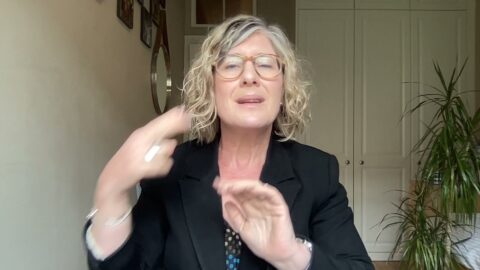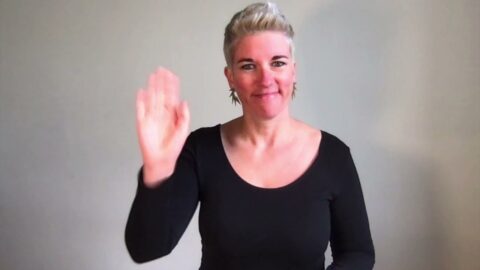“Family language policy” is the study of multilingual families’ decision-making processes about the languages they use in their families, the reasons they make these decisions, and the actual language practices in these families. We focus on family language policy in three families where spoken language(s) and signed language(s) are used: they are thus using different modalities (signing/speaking) in everyday face to face communication. The three families in our project include hearing children above 2 years old, who are bilingual or multilingual and use different signed and spoken languages and are growing up with a mix of deaf and/or hearing parents and deaf and/or hearing grandparents. Family language policy is intimate so the three families we decided to observe initially are our own as we already have a deep understanding of our family dynamics and contexts. So, this means we did not need a long period of immersion first, and are not “strange” researchers coming into families. We made ethnographic video recordings of our family interactions, mostly at mealtimes and at story time. We also constructed language biographies of the families, wrote field notes, undertook interviews with members of each family to explore language choices, and analysed children’s drawings and language portraits.
Key findings include:
- FLP is much more complex than using X different signed/spoken languages at home. Real data are “messy”. There are only a few clean “switches” with person X always using language/modality Y, and the relationship between person X and language/modality Y is not binary.
- The relationship between eye gaze and sensory differences impacts on choice of modality (whether someone chooses to use their voice or not). For example, who they are looking at, whether they are deaf or hearing, and how that influences the way they decide to communicate. It is also striking how much signing is accessed from peripheral vision (eg when telling stories) rather than through direct eye contact.
- Touch is very important and frequent in family language communication, more so than is the case in general in sign language communication between deaf and hearing sighted signers. For example, people sign on each other’s body (such as making a sign on a small child’s body or face), touch a small child’s throat (in combination with lipreading) to try to decipher what the child is saying, touch the throat of a hearing child who is singing or humming a song to feel the rhythm. Another example is a mother who’s in conversation with someone when their child asks for attention, holding and rubbing their child’s hand in order to let them know that they are aware the child wants attention and asking them to wait for a bit.
Blog + vlog:
Presentation in BSL:
“The fear of the slippery slope: conscious suppression of modality in family language policy”:
Publications:
Kusters, Annelies; De Meulder, Maartje & Napier, Jemina. (2021). Family language policy on holiday: Four multilingual signing and speaking families travelling together. Journal of Multilingual and Multicultural Development. https://doi.org/10.1080/01434632.2021.1890752
De Meulder, Maartje, Jemina Napier, and Annelies Kusters. (Forthcoming) “Researching Family Language Policy in Multilingual Deaf- Hearing Families: Using Autoethnographic, Visual and Narrative Methods.” In Diversifying Family Language Policy: Families, Methodologies, and Speakers, edited by L. Wright, and C. Higgins. London: Bloomsbury.




